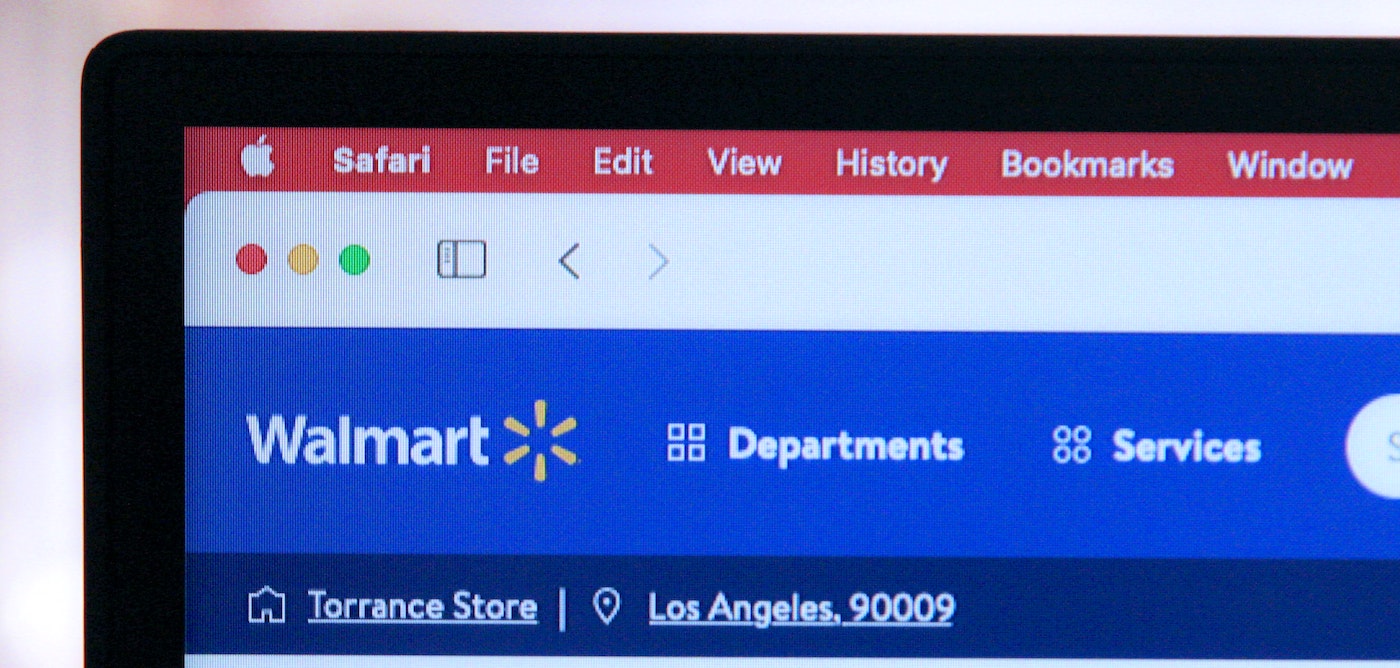Table of Contents
** Minutes
What is supplier relationship management (SRM)?
Benefits of improving supplier relations
Reactive vs. strategic approach to SRM
3 key steps in the supplier relationship management process
How to improve your supplier relations
Most businesses cannot be 100% in control of their supply chain.
This is because the majority of businesses rely on suppliers to help them procure, move, and ultimately sell their products. From wholesalers who supply raw materials inventory to the electricity companies that supply the power needed for your production process, third parties play a critical role in your ecommerce supply chain.
For some sellers, the idea of depending on outside suppliers for inventory or services can be daunting. But with the right supplier relationship management strategy, you can build partnerships that add value to both your business and your supplier’s, and ultimately create a more optimised supply chain.
In this article, we’ll cover what supplier relationship management is, key steps in the supplier relationship management process, tips for improving supplier relations, and more.
What is supplier relationship management (SRM)?
Supplier relationship management (or SRM) is the process of managing your relationships with third-party vendors or suppliers.
It involves systematically evaluating vendors based on their assets and capabilities to determine what value they add to your overall business strategy, as well as planning how to increase that value by strengthening those relationships.
Benefits of improving supplier relations
Improving supplier relationships isn’t just about improving rapport — rather, there are real monetary and strategic benefits to be gained from proactively managing your supplier relationships.
Find and keep the right suppliers
Suppliers play a central role in driving revenue for your business, and therefore have a significant impact on your business’s success. By taking the time to attend to each supplier relationship, you’ll gain new insights into which suppliers are helping you succeed and which are hindering you.
From there, you can act accordingly, strengthening your relationships with key suppliers and cutting ties with ineffective ones to create a better supply chain.
Mitigate supplier-related risks
Supplier risk is one of the biggest challenges in the industry. Vendors need to deliver high-quality goods or services at the right time, or else your business could suffer expensive delays that will then disrupt the entire supply chain.
The vendor evaluation process in supplier relationship management helps you identify supplier risk. You may be able to uncover supplier-related risks such as quality issues, delivery delays, compliance risks, ethical concerns, or a number of others.
Supplier risk management enables you to mitigate these risks by giving you real-time visibility into the performance and data of each supplier, so you can identify warning signs and act on them to avoid disruptions.
Optimise value chain and promote innovation
Simply by assessing and attending to supplier relationships, you may identify new opportunities or areas of improvement in your supply chain. Through leveraging key relationships, you could work on new innovations together, and deliver greater value for everyone involved.
Reduce costs
At its core, supply chain management boils down to a single goal: producing relationships that are more efficient and mutually beneficial, and that therefore deliver cost-savings.
A streamlined supplier network is a cost-effective one, so managing supplier relationships well can lower your overall supply chain costs.
Supplier relationship management also involves practices such as collaborative supply chain analysis and joint demand management, which help you pinpoint cost-saving opportunities while opening discussions on removing costs from certain areas of the supply chain.
Reactive vs. strategic approach to SRM
Traditionally, there have been two approaches to supplier relationship management: reactive and strategic.
Reactive supplier relationship management involves managing supplier relationships only when there is a disruption or an unfavorable situation. This approach aims to solve problems only after they arise, and only focuses on improving the performance of unreliable suppliers.
Strategic supplier relationship management, on the other hand, aims to prevent supplier problems or disruptions before they occur. Through systematically evaluating suppliers and developing a strategy to manage relationships, a business takes proactive steps to mitigate risks while strengthening their supplier relations.
A strategic approach to supplier management is almost always preferable, as it is much easier to avoid supply chain issues in the first place than fix them. The strategic approach increases your supply chain’s resilience, while also establishing more positive, constructive supplier communication and rapport (which is difficult to do when you only speak to your supplier when things go wrong).
3 key steps in the supplier relationship management process
There are three main steps in the supplier relationship management process.
Supplier segmentation
The first step involves segmenting your vendors according to different categories. While the exact categories may vary for each business, the classification typically segments suppliers by factors such as item, the complexity of the product or service, price, and supply volume.
The goal of segmentation is to figure out which suppliers provide the most strategic value to your overall operations, and which pose the most risk for your business. To assess this value, create a supplier scorecard that accurately reflects the contribution of each supplier toward your business success.
What brings value to one company may not bring value to another. However, some common value-adds in suppliers include:
- Quality of products or services
- On-time delivery
- Prompt and clear communication
- Transparency and ethical standards
- Cost-effective pricing
- Troubleshooting ability
- Sustainability initiatives
For the best outcome, make sure to do an enterprise-wide supplier segmentation on a yearly basis, and update your assessments frequently.
Strategy development
Next, using your supplier scorecard and segments, begin strategizing the best ways to interact with different suppliers according to your business needs. Keep in mind that you may need a different SRM strategy for each segment or even for suppliers within the same segment.
For example, if your scorecard indicates that your sourcing suppliers struggle to deliver inventory on time, your improvement strategy could involve reducing lead times, researching more local suppliers, or insisting that your supplier proactively communicate delays in the procurement process.
Keep in mind that any strategy should work for both your business and the supplier’s. This is essential to create a mutually beneficial relationship that drives innovation and value.
Strategic execution and monitoring
Once you have your strategies in place, it’s time to execute them in the most effective way possible.
To make sure that you’re achieving the desired results, you will need to monitor each strategy’s performance by measuring a few key KPIs. This will allow you to benchmark and continuously work on improving supplier performance, and make any necessary adjustments over time.
Although the specific metrics may vary for each company, some of the most important KPIs to measure are:
- Order accuracy
- Defect rates
- Purchase order cycle time
- Supplier lead time
- Compliance metrics
Tools such as order processing platforms, inventory management and tracking software, and warehouse management systems make it easier to find and measure these KPIs.
How to improve your supplier relations
Beyond the standard 3-step SRM process, there are many other ways that you can improve your supplier relationship management. Here are a few best practices to implement in your SRM.
Build trustworthy partnerships
An effective business views and treats its suppliers not as transactions, but as true partners. If you build your relationships with suppliers on mutual trust and understanding, both parties are far more likely to be honest with each other, and invested in one another’s success.
Open communication and transparency are key, so share information, questions, concerns, and updates with them, and listen to theirs in return — and with time, you may win their loyalty.
“As a family-owned business, it was important to know that our fulfilment business would continue to be treated the same way as we treat it ourselves — and we definitely got that with ShipBob.”
Sara Moradi & Amir Nizancevic, Co-Founders of iVYVERDURE
Choose quality over cost-efficiency
Every business wants to save money, but you should never do so at the expense of quality.
In the context of supplier relationship management, this means that it is almost always worth it to spend a little extra money to assure high quality and quick service. Otherwise, you could face expensive disruptions due to delayed fulfilment and subpar materials from an unreliable supplier.
During the value mapping stage of supplier relationship management, you can determine which areas you can afford to spend less, and which areas you should invest in more heavily. By allocating your funds strategically and cutting costs without sacrificing quality, you will ultimately drive the most profit.
Make timely payments
Just as you should trust your suppliers to deliver products on time, they should be able to count on you to make timely payments. Don’t forget that your suppliers rely on your payments to keep their business processes running, so constant delays in payments could cause significant disruptions and inconveniences for suppliers.
Even in case of any financial challenges resulting in delayed payments, it should be communicated beforehand to maintain transparency and allow vendors to make necessary preparations. This helps you establish yourself as a dependable partner and could help you win their trust and loyalty in the long run.
Keep an open line of communication
Strong supplier relationships are highly dependent on good communication. It’s crucial that you maintain an open line of communication with all your suppliers, so that both parties can easily voice any issues or updates. For example, they should be able to notify you of delays or shortages in production or fulfilment well ahead of time.
Additionally, your suppliers should be regularly informed of any plans, changes, and risks. This will help them understand where they fit in, how your strategies affect them, and what they can do to contribute. Make it easy to address any problems quickly and effectively.
Build fair contracts
When you’ve chosen the suppliers you want to work with, be sure to draft and sign a detailed contract. For an easy way to manage and sign your documents, consider using a free esignature app, which can streamline the process and provide a secure way to finalize agreements.
The contract should clearly outline what each party expects from the other in terms of service, price, payment terms, delivery terms, and communications at the very least. When your agreement is well-documented, it minimises the risk of confusion and the possibility of disputes.
It’s also important that the agreement is fair for both parties. This will increase the likelihood of the agreement terms being followed by each party. If you want to make it a long-term relationship, try not to lay out terms that are unreasonable or unattainable.
Gather relevant data to evaluate risks
Supplier-related risks can pose a serious threat to the supply chain, which makes it crucial to constantly evaluate risks — especially before onboarding them to your business.
When searching for new suppliers, always check their area of expertise and ask for references, preferably from businesses similar to yours. In addition, gather the following information from every potential supplier:
- How many years they’ve been in business
- What work they’ve done in the past
- How they typically handle a crisis
- How financially stable they are.
- How their pricing compares to other candidates
- Whether they have the capacity and infrastructure to handle your orders
This type of detailed vendor evaluation will help you predict risks and narrow down the most suitable suppliers.
Make use of available technologies
The latest advancements in technology are making supplier relationship management much more seamless. SRM software allows you to keep track of all the supplier information in one place, so you can monitor performance and get reports that you can use for making informed decisions.
The software also lets you maintain supplier scorecards so you can easily identify which relationships to leverage. You can even find AI-enabled SRM software that provides you with automated risk management alerts, which helps you make timely decisions to mitigate supplier-related risks.
“I’m obsessed with ShipBob’s dashboard – everything I need to know is there. If I want to know shipping analytics or shipping prices, it’s all right there and so transparent.
I love ShipBob’s analytics tool. I like being able to look at the last seven days of shipping costs. It’s so nice to see exactly what the average shipping cost is and make sure the number that my Shopify store has customers paying matches what’s in the ShipBob dashboard.
Having those kinds of metrics on hand at any point is incredible. I’ve never experienced that before. It’s great to know that whenever I’m interested in checking data, I can log on right away without having to email anybody for answers.”
Nichole Jacklyne, Founder of Slime by Nichole Jacklyne
Add a 3PL to your professional circle
Beyond your partnerships with suppliers, you may need other outside entities to keep your ecommerce operations running seamlessly.
For businesses looking to optimise their inventory storage, fulfilment, and shipping operations, partnering with a third-party logistics provider (3PL) such as ShipBob can set your business on the road to success, while saving you time and money.
ShipBob offers Amazon-level outsourced fulfilment solutions, so you can leave your entire fulfilment process to the experts. You get to leverage our distributed network of fulfilment centres to store your inventory in, and let our professional fulfilment team handle everything from order receiving to picking and packing.
With high order accuracy rates and fulfilment efficiency, your customers will receive precisely what they ordered in 2 days, while you monitor all orders, inventory levels, and key analytics from your ShipBob dashboard. The real-time visibility our software provides can even help you measure KPIs, and evaluate your suppliers using data tracked on your dashboard.
If you’re interested in learning more about how ShipBob can partner with you to take more supply chain activities off your plate, click the button below.
Supplier relationship management (SRM) FAQs
Here are answers to the top questions about supplier relationship management (SRM).
Why is supplier relationship important?
A business’s relationship with its suppliers is important because suppliers play a central role in driving revenue, which subsequently impacts a business’s bottom line. To maximise revenue, a business should forge supplier relationships that are mutually beneficial, efficient, honest, communicative, and collaborative.
How to build a good relationship with your suppliers?
You can build a good relationship with your suppliers by maintaining an open line of communication, paying them on time, drawing up mutually beneficial contracts, and treating them as strategic partners to build two-way trust.
What are the 3 C’s of a healthy supplier relationship?
Collaboration, coordination, and cooperation are the 3 C’s of a healthy supplier relationship.





